Knot of Stone is a work of historical detection in which two unlikely travel companions—a restless Dutch historian and a jaded Afrikaans archaeologist—find themselves drawn together following the chance discovery of a five-century-old skeleton at the foot of Table Mountain.
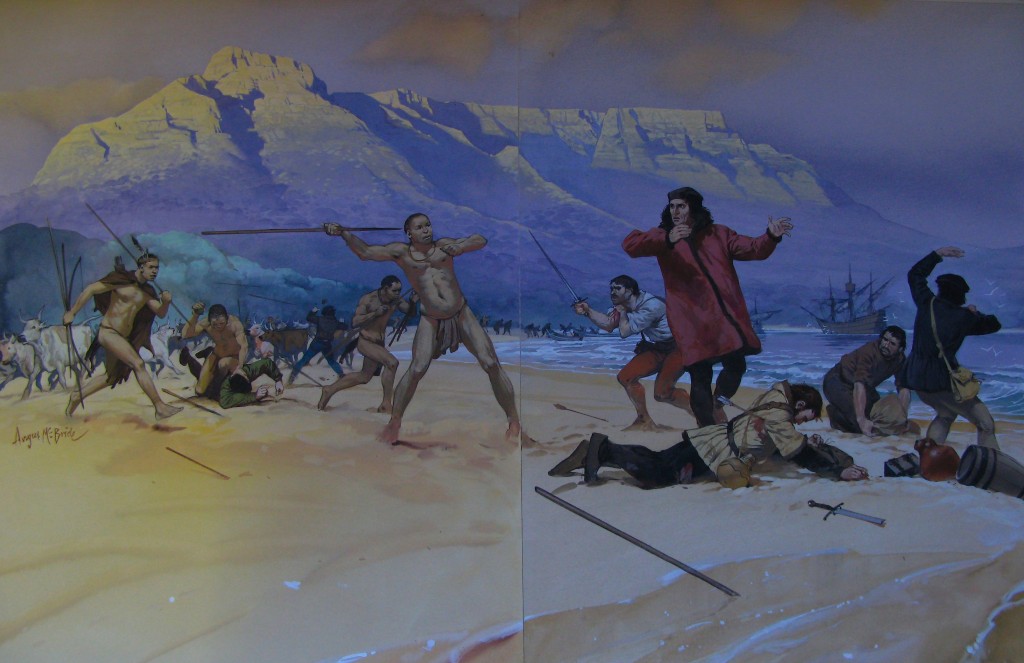 The death of Viceroy Francisco d’Almeida in 1510 by Angus McBride, 1984. Courtesy of the Castle Military Museum, Cape Town. To shift focus from the interloper to the indigene, from a Portuguese defeat to a Khoena victory, local activists now refer to the event as the Battle of Goringhaiqua.
The death of Viceroy Francisco d’Almeida in 1510 by Angus McBride, 1984. Courtesy of the Castle Military Museum, Cape Town. To shift focus from the interloper to the indigene, from a Portuguese defeat to a Khoena victory, local activists now refer to the event as the Battle of Goringhaiqua.
Knot of Stone is a unique historical novel that begins and ends with an enigma—an alleged mass murder in South Africa and a long-lost treatise, the Sierra Nevada. In 1510, when the Cape of Good Hope was still revered as a southern Portal to the Indies, the Viceroy of Portuguese India was led ashore, attacked, slain and hurriedly buried in a shallow grave. The death of Francisco d’Almeida and sixty-odd compatriots remains a mystery to this day. Was it the fulfillment of a prophecy or an act of poetic justice? Was it an ambush, a mutiny or even an assassination? And if so, was it instigated by Manuel I, then king of Portugal, or by a secret cabal within the Church of Rome?
Watch our video-introduction:
What’s the book all about?
Knot of Stone is a tale of murder and intrique in which historian Sonja Haas and archaeologist Jason Tomas search for fresh evidence that leads ever further north to ancestral burial sites, remote mountain sanctuaries, sacred springs, medieval monasteries and rare museum artefacts. Via several roadside encounters, including the startling revelations of a sangoma (a healer empowered by the ancestors), the two travellers reconstruct the past and their own identities, with divergent consequences. As the book’s main focaliser, Sonja’s inner conflict reflects her passage from doubt (tormentoso) to hope (esperança), echoing the transition from a Cape of Storms to the Cape of Good Hope. Like Sonja’s search for herself, this story is ultimately a tale of self-discovery. To follow her journey in South Africa, click Unravel the clues.
Why this title for the book?
Knot of Stone is a unique story about an obscure murder that reset the stage for our modern world. Viewed against an age-old East-West/North-South balance of power, the characters follow the slow emergence of a united Europe in relation to a divided Africa. Like the complex, intricate and elegant strands of a Gordian knot, they unravel the lives of those who altered the course of western history. To read about the meaning of the book’s title, see Why tie a knot in stone?
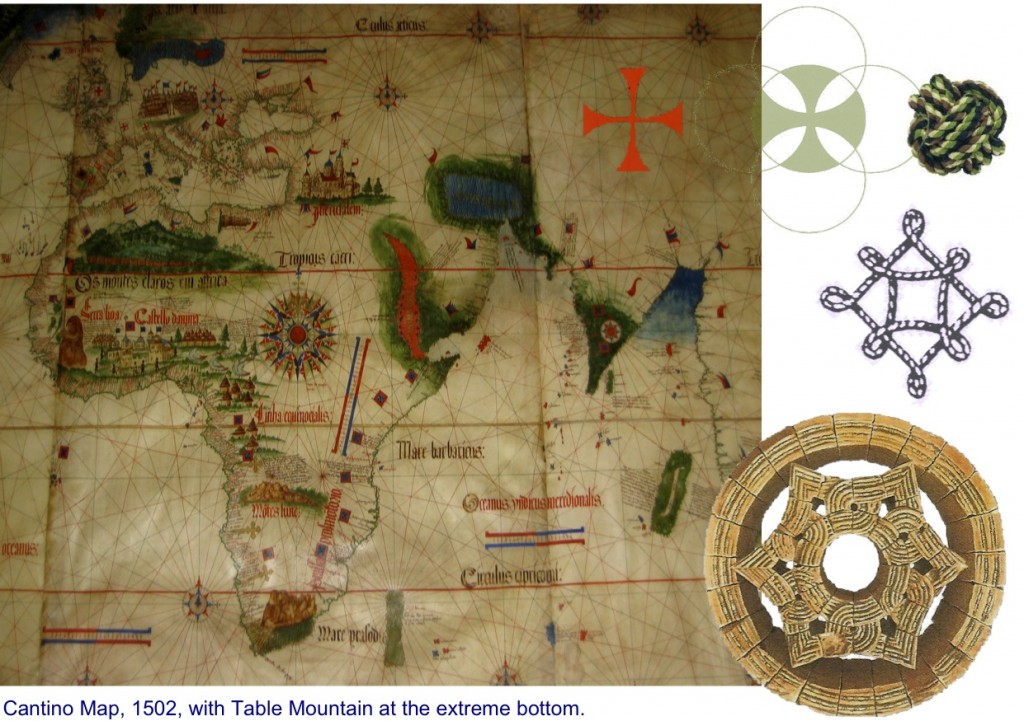
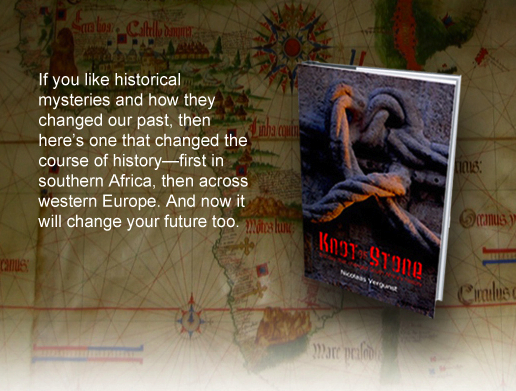
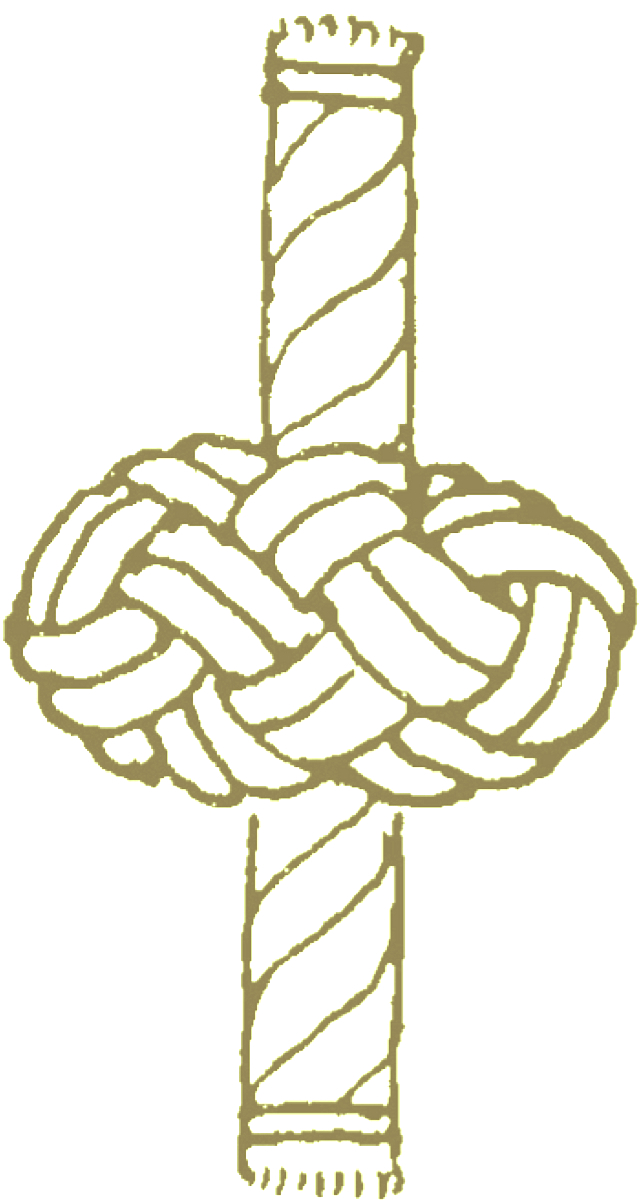
Knot of Stone is published in the UK & US. Order a copy online.
Click here for a Dutch or Portuguese review of Knot of Stone.
One day can change your life, so buy the book or read the first chapters free.

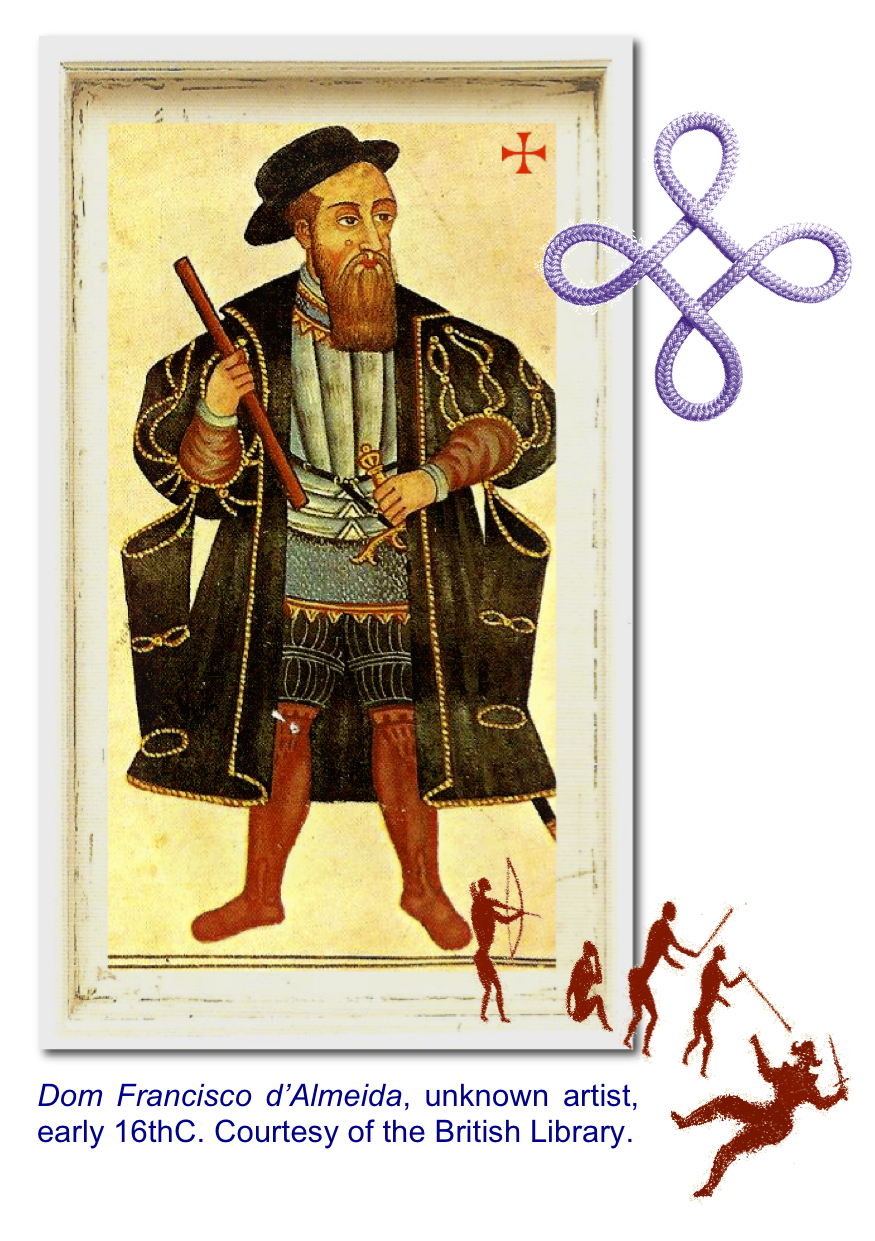
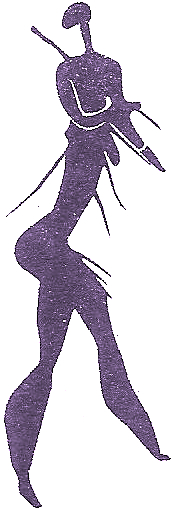





“The killing of Almeida is one of the greatest tragedies in Portuguese history.” Victor de Kock, chief archivist, Cape Town, 1952.
“The killing of Almeida was our finest hour and gives us pride of place in modern history.” Ron Martin, Khoisan community leader, Cape Town, 2010.
Our finest hour or greatest tragedy?
This violent clash took place in 1510, when Dom Francisco de Almeida (Viceroy and Governor of the Portuguese State in India) went ashore. He apparently angered the Khoi-Khoi because he approached one of their settlements uninvited. Some of his marines were injured in a skirmish. In retaliation about 100 of his men returned and took some cattle and a few children as hostages.
However, the Portuguese found themselves suddenly surrounded by a large herd of cattle, driven by the Khoi—who then threw fire-hardened, wooden spears at them from behind this moving “defensive wall.” The marines had neglected to wear armor, and carried only swords, so they could not effectively defend themselves, and de Almeida and 58 of his men were killed by being speared, or trampled by the cattle. Thereafter, the Portuguese largely avoided the Cape.
Thanks for this vivid description, Cuan, though I’m not sure of any “uninvited” visit? It was a punitive expedition which Almeida himself led, reluctantly, after several officers voted in favour of reprisals and a pre-dawn raid on the village. Almeida and those faithful to him suspected foul play and, indeed, were led into an ambush by a faction among his crew. The confrontation was orchestrated to look like the fulfillment of the famed witches prophecy that “Ameida would not pass beyond the Cape of Good Hope, it being the portal to the Estado da Índia and the border of his realm”.
See Knot of Stone (pp.81–82) for a more detailed reconstruction of events that fateful Friday morning.
A very accurate description as well… thanks for the memory, guys.
“The killing of Almeida was our finest hour and gives us pride of place in modern history.” Stick by your anniversary comment, Ron, that’s fine with me, but don’t take on the burden of blame for this massacre. Your forebearers were set up to attack Almeida while his true assassins abandoned him, so that history would remember the Cape Khoisan as a wild and unreliable lot. Portugal’s propaganda worked and has been repeated for five hundred years. Now is the time to reclaim your peoples’ role in saving southern Africa from a very different future—that is, from becoming a second Brazil. See my blog on why South Africa isn’t Brazil.
I don’t think that my people would regard the actions of our forebears on that fateful day as a “burden of blame”… remember, too, that the various accounts of the event were all recorded and intepreted from various biased opinions (ours too, for that matter), and that the debate is finally raging, as it should have a long time ago. History as a discipline may very well be the winner in the end.
You were blamed, however, by Portuguese chroniclers. Unwitting or not, they drew attention from the conspirators in Lisbon and Cochin, India.
I realise that, but in the context of the day, the Goringhaiqua perceived the visitors as intruders whom they had to dispel since they (the Portuguese) made the first threatening gestures. The Khoi would not have been interested in any conspiracy… it was not their business. Even today, the attitude amongst our people with regard to the Portuguese chroniclers’ accounts are “so what?”
Last year we celebrated the 500-year anniversary of a victory in a David and Goliath-type battle against a (superior) evil slave-trader and war-monger, and it is simply this vision that instills in our people a pride that is incomparable with any other, especially when our nation is starving for heroes and pride in our heritage. As much as there is truth, blame, interpretation, conspiracy-theories out there, our people are resolute: the Goringhaiqua kicked D’Almeida’s ass! He may have sacked Sofia and brought down the Ottoman Empire, but a few lowly pastoralists saw the end of him. Grant us that, at least.
You killed him, granted, with a sling-shot stone behind his knee and a wooden spear through his throat. You can make of that what you will, Ron, but to my mind it was a heroic victory in defense of all that was dear to you: your women, your children and your cattle. But this is not my point. I merely wish to state that Almeida was the true victim here; the victim of an order of execution disguised as a prophecy of doom. According to the clairaudient message cited in my book:
“The Viceroy was already dead, and his party wiped out, when the conspirators returned to seal their atrocity—ritually piercing Almeida through the throat with a lance of steel. Thus they silenced him forever.” (KoS p.13)
Could you, as the Silent Ones who have suffered through our history, perhaps speak for him too?
As a student of history, I would not completely discount the idea of redressing the historical narrative by speaking for D’Almeida too. However, that is the very point. We, the Khoi-khoi and Boesman (we hate the term Khoisan, by the way), find ourselves constantly having to scream to be heard, and then still get ignored, so why should we speak for a perpetrator of violence against us, even if it merely serves to complete the narrative? Nobody is prepared to do that for us.
Maybe, after a few more years, when our own pain is somewhat less, we can entertain the notion, but at the moment we are still trying to enter our narrative into the frey, against all odds… charity begins at home.
While we clearly differ on the character of Almeida and the role played by his men in the ambush—including their ritual killing of him afterwards—the event marks the first recorded battle and first known murder in South African history.
I wish you well with your narrative, Ron, and hope your voice is heard.
Was it ambush, mutiny or assassination? Neither. It was his own arrogance and, consequentially, his underestimation of the cowherders whom he thought were mere disorganised savages… anyway, they showed him, didn’t they? The events leading to 1 March 1510 may have had many catalytic influences, but two stark facts are evident:
Don’t take the pride in our heroes and their achievements away from our people, simply to satisfy some clever conspiracy theory. Europeans have already taken everything else.
If any clever conspiracy exists, then it is the story that emerged in Lisbon after Almeida’s murder. I do not exclude the fact that Almeida was killed by your people, Ron, so take pride in his death, by all means, as I merely wish to assert that Almeida (once dead and stripped of his clothing) was “ritually executed” by his compatriots when they returned to the beach later that afternoon. It was a symbolic gesture—a ceremonial act of sorts—and its memory the stuff of dreams, prophecies and sangomas. See the book for details. (KoS pp.33, 325-328)
The skirmish at the Cape was serious, yes, since it altered the course of South Africa’s history, irrevocably. Furthermore, had it not been for the murder of Almeida and his party, the entire sub-continent may well have fallen under Portuguese (Catholic) control and followed a fate similar to that of South America. See my blog on why South Africa isn’t Brazil.
I love to read your book… everything is strangely beautiful about its name, its look, your illustrations and use of words… I’d love to read it.
Thanks for the keen response, you can order Knot of Stone online.
Today we revisit the events of 1 March 1510, the Almeida/Khoena Conflict.
Today, for the second year in a row, the South African government has chosen to frame Heritage Day in terms of the ANC’s liberation struggle and the role played by its freedom fighters. The same theme was used for official celebrations on 24 September last year. I find this not only repetitive, but rather retro, coming two decades after the country’s first democratic elections. Moreover, making colonial encounters look like racial conflicts is simply shortsighted. So, in case we forget it again this year, the murder of Almeida need not be blamed on the Khoisan alone.
I’ve been hearing about this and am really looking forward to reading it! I heard it is a true story? Wonder why we are just now coming out? Hmmm, I guess there are many more stories like this that we haven’t heard about too…
Hi Nicolaas, the account of Almeida’s post-death ritual is very intriguing. Your website’s banner image reminds me of the Manueline decorations, such as the janela de Tomar in Portugal, one of the strangest pieces of sculpture I’ve ever come across. Would like to know more.
You’re very alert, Bernard, recognising the carved knot on my website pages. It is the signature image for my novel, and appears on the book cover too. This knot, however, can be seen on Belem Tower in Lisbon. Please see my blog for more information on its location and symbolism: Why tie a knot in stone?
The first known murder in South Africa’s history? Really? I mean… really?
It’s the earliest recorded murder we have. There were others before, of course, but these haven’t survived on record or in local oral tradition. If you know of one that predates this first encounter at the Cape, then please do pass it on Malcolm.
It seems the San or Boesman are the tree with many branches of humanity, not only in Africa, but everywhere. I think that’s why the Europeans went to Africa, after the Arabs did, they went to meet their ancestors. Excuse my expression in English, it is not good, I’m Portuguese.
Isabel, your English is fine and far better than my poor Portuguese. I had to ask others to translate key texts during my research. Triste.
You raise a significant point about the origins of Arabian and European expansion in Africa. While the need for trade, territory and converts played a part, men like Almeida used this opportunity to re-establish contact with pre-Muslim and pre-Christian forms of worship—that is, with the so-called Wisdom of the Ancients.
It is curious that you should raise this, now, as it was the main motive behind Almeida’s execution. He was in fact silenced after death (his tongue was removed) for trying to re-open channels of esoteric communication between East and West. See my article on rethinking east-west histories.
I plan a trip to the cinema when the film is made. The soundtrack is curious, where did you find it?
The soundtrack is by a good friend Nellis Du Biel, formerly from Cape Town, now living in Berlin. The song is based on a poem written by his brother Anton and entitled The bar at the end of the world, recorded 1997. Coincidentally, the lyrics describe the scene with uncanny insight:
For more album details, see The bar at the end of the world.
Nice video. Nice old footage.
The original footage was shot on a 8mm camera by my father as we sailed into Cape Town harbour aboard a Union-Castle steamship in 1963. This is also my earliest recollection of Table Mountain.
People are hurt and they want to find their own story without others insisting that EUROCATION is the only way. Let people find their own way and maybe you will also learn a new way of helping EQUALITY OF THE MIND TO EXIST IN EUROPEAN DESCENDANTS TOWARDS AFRICA & AFRICANS – WHERE AFRICANS TELL THEIR OWN STORIES MY BRO — os kry nou eers n kans en djy wil somma os weer stil maak — laat os vir os self leer — ek sal jou boek lees, ma lees oek vir The Lie of 1652 by Patric Mellet en annes oorie topic…
My point is books are written by those who pressed the people for such a long time and now that we search for alternatives to their one story and the impact it has had on us, they insist we only use their references and their research and be right immediately. THIS FROM THE HERITAGE THAT INSISTED WE STARTED IN 1652. Nah my bro man — laat die lees en vir hulle self vind.
Yes, I agree, we all feel hurt and want to rewrite history, Emile, but this isn’t new or limited to Africa. In Europe, or at least where I now live, the struggle to rewrite history dates back to a time when our communities struggled under Roman military occupation along the Rhine. Our pagan past and agrarian identity was at stake. Today the Netherlands has a well-established tradition in which we continuously rewrite history or re-evaluate what happened because insights change and new voices need to be heard. For us, here and now, rewriting history is usually a broad collective effort and conducted as an open public debate.
I wish the same for the rewriting of the 1510 battle at the Cape. The official Portuguese account remained unquestioned for 500 years and most history books still repeat the same mix of facts, lies and propaganda; even though these were recorded by court chroniclers long after the event. This account was perpetuated by Dutch and English colonialists. As you correctly point out, one story should never dominate or be used to oppress others. My version is based on an oral tradition (Stein, 1924) that challenges conventional accounts of the skirmish and, hopefully, opens up new or alternative interpretations for all concerned — that is, for both you and I, Emile. May we share our insights and hear each other’s voices today. May our endeavours prove worthwhile to others too.
See http://www.knotofstone.com/quarterly-bulletin
As for the lie of 1652, I don’t think any serious South African buys into this ‘birth of a nation’ stuff anymore. Those who still do haven’t been paying attention to what’s taught in class, reported via the media or available online. As I recall, the colonial narrative passed its sell-by date with the 1988 Dias Festival boycott when local people protested “whose history is it anyway?”. Since then local stories have gained the high ground. The rest is history. Hamba kahle!